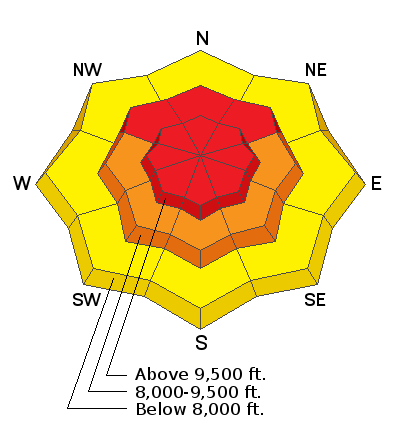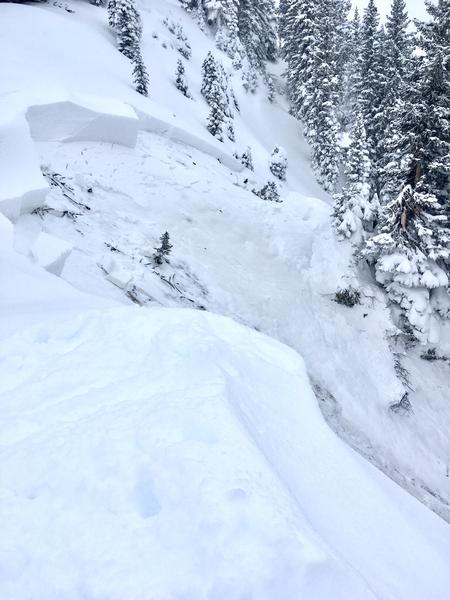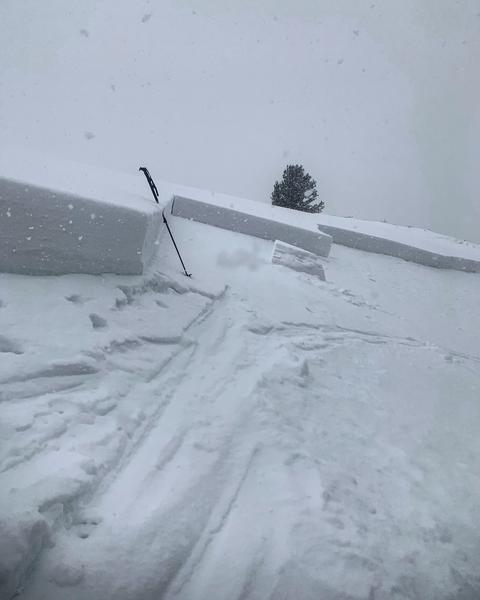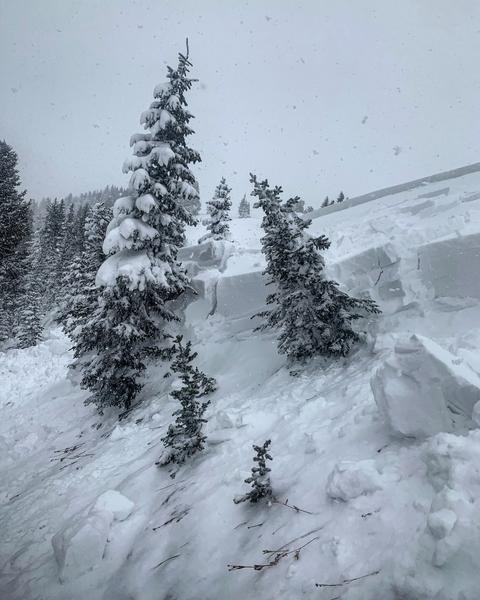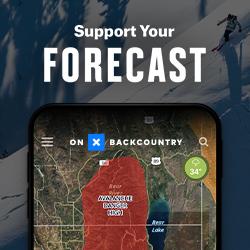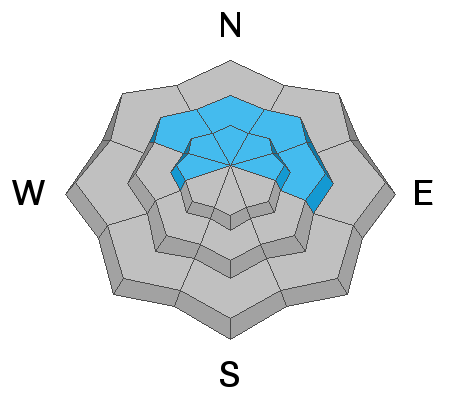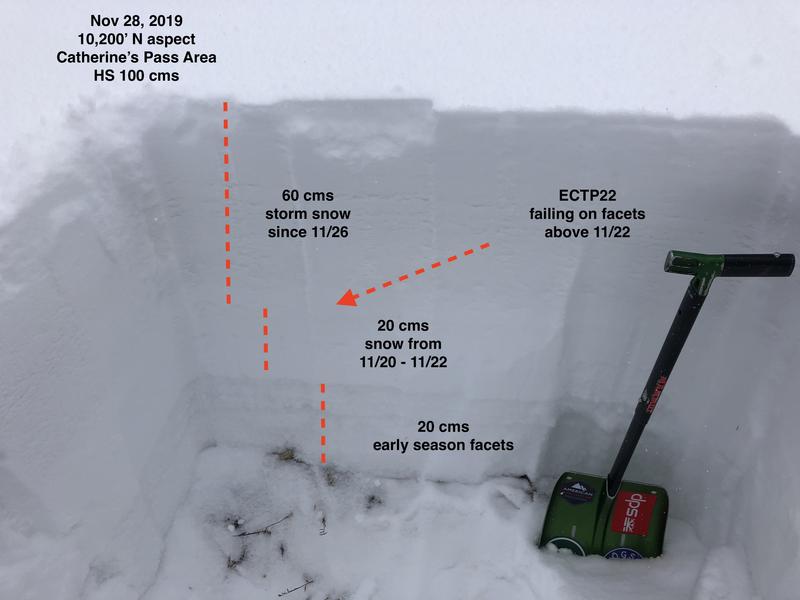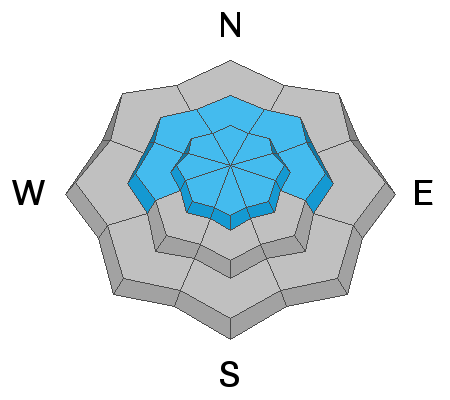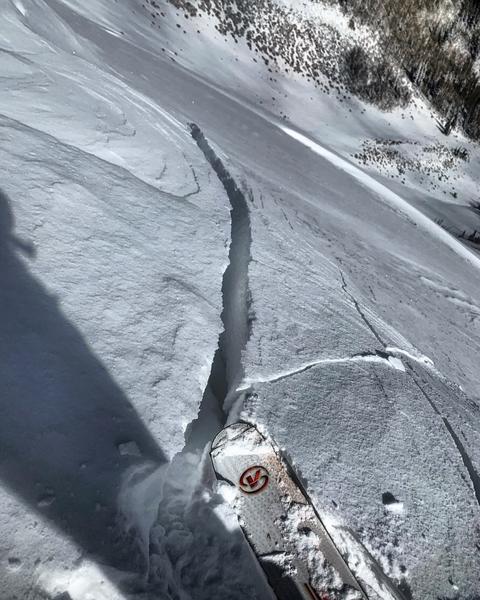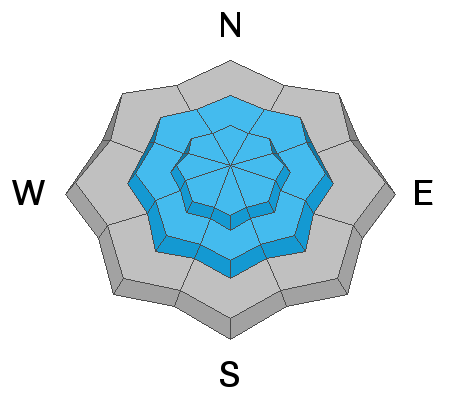Strong winds from the south-southeast continued for the last 24 hours, averaging 20-30 mph, and gusting near 50 mph. Throughout the day these winds should diminish and shift to the southwest and then the west as a cold front passes through this afternoon.
Mountain Temperatures increased overnight and are now in high teens and low 20s, but should begin dropping throughout the day.
Across the Central Wasatch, 15-20 inches of new snow has fallen in the last 24 hours containing 1.0-1.5 inches of water.
We are not expecting much new snow this morning, but rates should pick back up this afternoon with 8 inches expected by sunset. Heavy snowfall on a cold northwest flow expected overnight.
Our week in review (including a summary of the early season) can be found
HERE.
Yesterday was an active day in the backcountry. Multiple natural and human triggered avalanches were reported across the region.
In Big Cottonwood Canyon, both natural and human triggered activity was seen. In
East Bowl of Silver Fork, an avalanche was remotely triggered on a steep northeast aspect at 9,900'. This avalanche failed 3 feet down in facets near the ground. The crown was 50' wide and ran 200'.
Northeast facing crown remote trigger - Big Cottonwood Canyon - PC: N. Grainger
Also in Silverfork, evidence of a natural avalanche was seen on NNW slope, failing 2 feet down in the facets above the November crust. The crown was about 240' wide. Multiple other remotely triggered avalanches and collapses were produced throughout the day that propagated to slopes over 35 degrees.
On the Park City Ridge, natural and human triggered activity was also seen. On
South Monitor Bowl an avalanche was remotely triggered from the ridgeline on steep north aspect at 9,400'. This avalanche failed 3 feet down on facets and was 400' wide.
North Facing Crown - S. Monitor Bowl - PC: M. White
S. Monitor Bowl Avalanche - PC: M. White
On the Park City Ridgeline, evidence of natural activity on steep north aspect at 9,8000' was also seen on
Scotts Bluff. It failed on facets and ran 350'.
As well the resorts were reporting natural, human and explosive triggered avalanches, these avalanches were failing in facets above the November crust and occasionally stepping down the ground.
Check out all of our observations
HERE.

